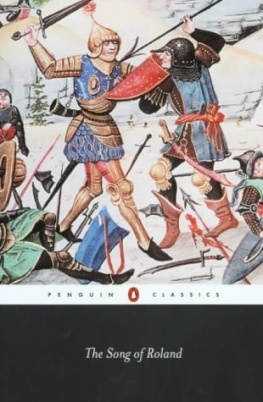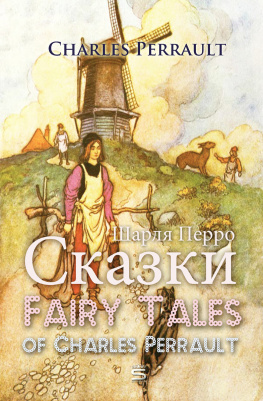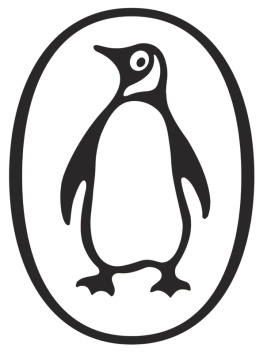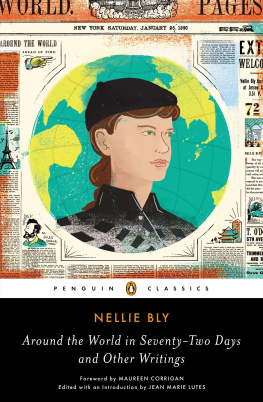

THE HEPTAMERON
P AUL C HILTON was formerly Reader in French Studies at the University of Warwick and is currently Professor of Linguistics at the University of East Anglia. His publications cover a range of topics and disciplines. In addition to work on French Renaissance literature, he has published books and articles on discourse and metaphor; he is known for his work on the language of politics.
MARGUERITE de NAVARRE
The Heptameron
Translated with an Introduction by
P. A. CHILTON
PENGUIN BOOKS
PENGUIN BOOKS
Published by the Penguin Group
Penguin Books Ltd, 80 Strand, London WC2R 0RL, England
Penguin Group (USA) Inc., 375 Hudson Street, New York, New York 10014, USA
Penguin Books Australia Ltd, 250 Camberwell Road, Camberwell, Victoria 3124, Australia
Penguin Books Canada Ltd, 10 Alcorn Avenue, Toronto, Ontario, Canada M4V 3B2
Penguin Books India (P) Ltd, 11 Community Centre, Panchsheel Park, New Delhi 110 017, India
Penguin Books (NZ) Ltd, Cnr Rosedale and Airborne Roads, Albany, Auckland, New Zealand
Penguin Books (South Africa) (Pty) Ltd, 24 Sturdee Avenue, Rosebank 2196, South Africa
Penguin Books Ltd, Registered Offices: 80 Strand, London WC2R 0RL, England
www.penguin.com
First translation published in 1984
Reprinted with updated Further Reading 2004
Copyright P. A. Chilton, 1984, 2004
All rights reserved
Except in the United States of America, this book is sold subject
to the condition that it shall not, by way of trade or otherwise, be lent,
re-sold, hired out, or otherwise circulated without the publishers
prior consent in any form of binding or cover other than that in
which it is published and without a similar condition including this
condition being imposed on the subsequent purchaser
EISBN: 9780141911151
CONTENTS
INTRODUCTION
1. THE TEXT
The Heptamron is a collection of some seventy stories. It has no definitive form: the order of the stories, the stories actually included and the textual details vary considerably from manuscript to manuscript and from printed edition to printed edition. As for the author, the scholarly consensus confidently attributes the collection to Marguerite de Navarre (14921549), sister of Franois I, patron of Rabelais, Marot and Des Priers, protector of reforming churchmen, and writer of intense mystical verse. However, this attribution is based on evidence which is at best circumstantial, and which needs to be interpreted with moderation.
Marguerite died in 1549, but the collection did not appear in print until 1558. It bore the title Histoires des Amans fortunez , and was edited by the humanist scholar Pierre Boaistuau. This first edition had only sixty-seven stories, arranged in an order not found in any of the other versions, and omitted the linking discussion passages found in the fullest manuscripts. Moreover, in his dedication (to the Duchess of Nevers) Boaistuau makes no explicit mention of Marguerite de Navarre as the author. Perhaps this was because Boaistuau had made a botch of her work. Perhaps it was because Marguerite was not the real author of the collection, or at least not the original author of all the tales and all the dialogues.
One year later in 1559 a new edition came out which claimed to restore the stories to their true arrangement and to give credit for authorship where it was due namely, to the late Queen of Navarre. Pierre Gruget, the new editor, also gave the collection a title it has had ever since, though it never had it in the manuscripts: LHeptamron des Nouvelles . In a dedication to Marguerites daughter, Jeanne dAlbret, Gruget grumbles about Boaistuaus omission or concealment of the authors name, and claims to have restored her work to its pristine state by collating all the available manuscript versions. Gruget certainly ordered the tales differently, distributed them into Days of ten stories, and brought in fuller prologues and dialogues. But he still remains close to his predecessor. Both of them disguise proper names and suppress passages which might have been suspect to conservative theologians or which might have offended the religious orders. This did not become plain until the nineteenth-century editors returned to the extant manuscripts. At the same time it emerged that Gruget had removed three whole stories (stories in the manuscripts), presumably because they represent the Franciscans as gluttons, parasites and rapists, and had substituted three which were less disturbing.
So Gruget, who appeared to be establishing the Heptamron canon, ends up raising questions about it. Where did his three stories come from? Are they by Marguerite? Are there any mislaid stories which still might turn up and make the Heptamron the French Decameron its editors wanted it to be? Twentieth-century researchers have believed this to be the case. They have given attention to one particular version an elegant manuscript dated 1553 prepared by the scholar Adrien de Thou. This manuscript calls itself Le Dcamron of Marguerite, and seems to leave empty pages for missing tales to complete the hundred implied in the title. It needs emphasizing, however, that this text, although it is consistent, readable and bristling with variants, appears to be a heavily edited version of other, earlier, manuscripts which are often incomplete or obscure. Its main interest, therefore, is as a guide to alternative readings and as an indication of how a careful sixteenth-century reader could make sense of faulty copy.
The expectations aroused by de Thous blank pages have hardly been fulfilled. Apart from Grugets three substitutes, only two further candidates have been discovered, a short story which occurs in three idiosyncratic manuscripts and a fragment of dialogue in another manuscript of de Thous. So there are four more possible tales that one could add to the canon. While in style and content they are more or less compatible with the main corpus, there is no direct evidence as to authorship, and it remains largely a matter of taste whether or not one includes them. They have been left out of the present translation.
Much more research into the manuscripts needs to be done before we can have a complete picture of the Heptamroris evolution. There are seventeen existing manuscripts of differing degrees of completeness. They can be divided into two groups, although it has not so far been the custom to look at them in this fashion. The first group, whether or not they have the full seventy-two tales of Gruget or the full linking dialogues, all agree with his arrangement. The clearest and most complete of these (manuscript Fr. 1512 in the Bibliothque Nationale) has been used as the basis of Michel Franoiss edition, which is nowadays the most widely used version, and which has been adopted as the basis for this translation. But even here Franois has had to amend (using de Thou), and the resulting text still contains words, phrases and whole sentences which either do not make sense or require acrobatic interpretation. The second group of manuscripts has the stories in an order different from both Gruget and Boaistuau. It has no discussions between the storytellers, but instead an argument preceding each tale and a conclusion, whose function is primarily to draw out moral and pious lessons. One of the stories in two of these manuscripts is the fourth find which has been mentioned above. The best of this group is in the Pierpont Morgan library in New York. Besides offering seventy tales, it includes the Prologue and a delicate contemporary pen drawing of the storytellers. What is the status of this second group of manuscripts? In so far as it is mentioned at all by scholars it is usually assumed to represent later anthologies la Boaistuau. Strictly speaking, however, it still remains to determine whether these manuscripts do not represent a Proto- Heptamron with a logic and intention of its own.
Next page










